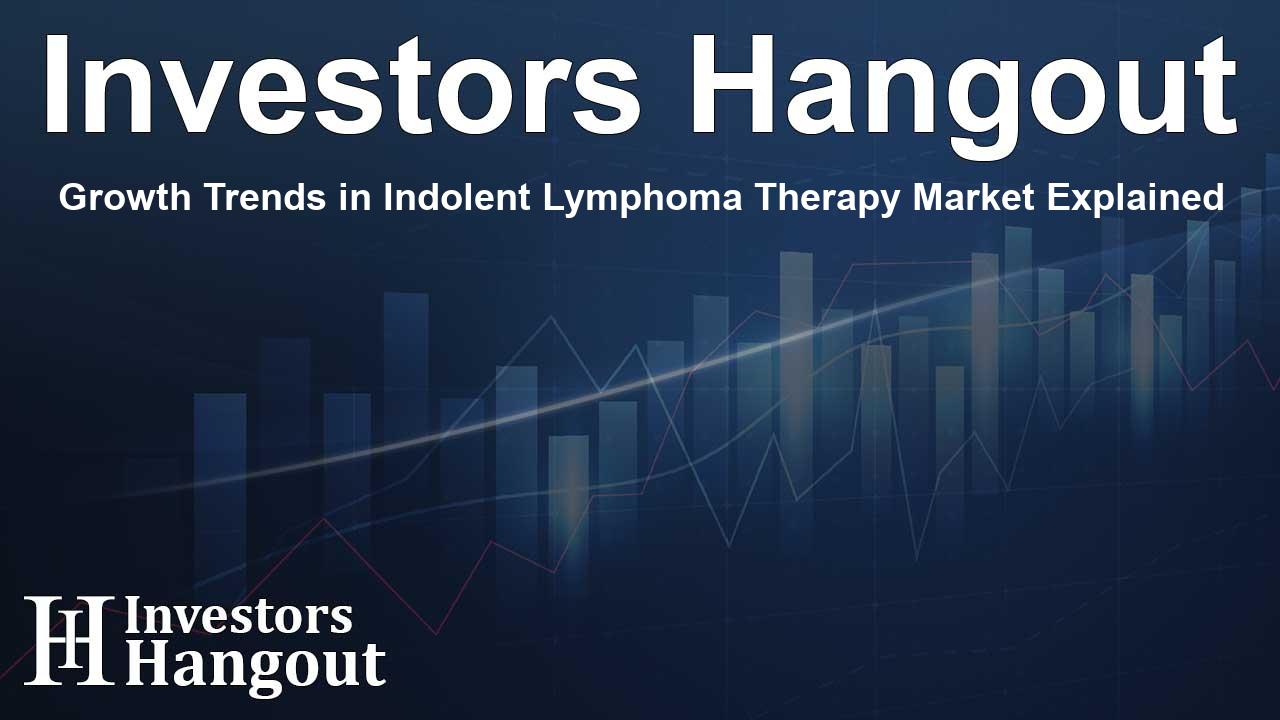Growth Trends in Indolent Lymphoma Therapy Market Explained

Understanding the Indolent Lymphoma Market Growth
The indolent lymphoma market is currently experiencing significant growth, driven primarily by the rising incidence of slow-growing non-Hodgkin lymphomas and increased awareness regarding early diagnosis. Notably, the introduction of innovative therapies has played a substantial role in this expansion. Emerging treatments like AZD0486 by AstraZeneca, EO2463 from Enterome, and others are set to reshape the treatment landscape, enhancing patient care and outcomes.
Current Market Overview
The indolent lymphoma market is projected to witness considerable growth through the next decade, catering to an expanding patient population in various regions. Particularly, the United States represents the largest market share, showcasing a robust treatment segment compared to counterparts in Europe and Japan. Notably, indolent lymphomas account for around 41% of all non-Hodgkin lymphoma cases in regions such as North America and Northern Europe.
Emerging Therapies Driving Growth
Several pharmaceutical companies are spearheading the development of innovative therapies for indolent lymphoma. Companies like AstraZeneca, BeiGene, and Xynomic Pharmaceuticals are noted for their promising investigational drugs aimed at improving patient outcomes. Key experimental therapies currently undergoing clinical trials include AZD0486, EO2463, and Abexinostat, among others. These new therapies not only improve efficacy but also aim to reduce side effects, thereby enhancing patient compliance.
Key Factors Influencing Market Dynamics
The growth of the indolent lymphoma market can be attributed to various factors:
Advancements in Treatment Modalities
Recent advancements in targeted and immunotherapy treatments have revolutionized indolent lymphoma management. These innovative option provide greater precision in targeting cancer cells while minimizing harm to normal cells, leading to improved patient satisfaction.
Molecular Profiling Technologies
Another significant advancement is the emergence of sophisticated molecular profiling techniques. Technologies such as next-generation sequencing and circulating tumor DNA analysis enable the identification of specific genetic alterations responsible for disease progression. This insight facilitates the application of targeted therapies, resulting in better treatment outcomes.
Current and Future Developments
As the market evolves, ongoing clinical trials exploring novel therapies continue to generate excitement. Companies are diligently working on new candidates like AZD0486, EO2463, and NVG-111, which, upon successful completion of trials, are anticipated to launch and shift the market dynamics extensively.
Competitive Landscape and Company Innovations
In addition to emerging therapies, ongoing competition among pharmaceutical companies fosters innovation in the indolent lymphoma market. AstraZeneca’s AZD0486 is designed as a next-generation bispecific T-cell engager, promising to enhance treatment efficacy. Similarly, Enterome's EO2463 emerges as an off-the-shelf OncoMimic active immunotherapy, reflecting the industry’s commitment to developing creative solutions in the battle against indolent lymphoma.
Understanding Indolent Lymphoma
Indolent lymphoma describes a type of non-Hodgkin lymphoma that progresses slowly, often requiring careful monitoring. Common subtypes include follicular lymphoma and marginal zone lymphoma. Symptoms may take time to manifest and often include swollen lymph nodes, fatigue, and frequent infections. Due to the slow progression, physicians may adopt a “watch and wait” approach before initiating treatment.
Market Trends and Future Outlook
The focus on research and development within the indolent lymphoma market demonstrates a promising future. The integration of new therapies and enhanced diagnostic techniques are expected to drive significant growth. The ongoing commitment from leading companies indicates an optimistic outlook, with innovative treatments poised to improve patient outcomes and redefine standard care practices worldwide.
Frequently Asked Questions
What is the indolent lymphoma market growth driven by?
The market growth is primarily driven by the rise in cases of slow-growing non-Hodgkin lymphomas and the introduction of innovative therapies.
What are some promising therapies in development for indolent lymphoma?
Notable therapies under development include AZD0486 by AstraZeneca and EO2463 by Enterome, among others.
How does the treatment landscape for indolent lymphoma look like currently?
The treatment landscape is evolving with advancements in targeted therapies and personalized medicine improving patient outcomes.
Why is molecular profiling important in treating indolent lymphoma?
Molecular profiling helps identify genetic alterations, which can guide the selection of targeted therapies, improving treatment efficacy.
What characterizes indolent lymphoma?
Indolent lymphoma is characterized as a slow-developing type of non-Hodgkin lymphoma, often requiring careful monitoring and a tailored treatment approach.
About The Author
Contact Logan Wright privately here. Or send an email with ATTN: Logan Wright as the subject to contact@investorshangout.com.
About Investors Hangout
Investors Hangout is a leading online stock forum for financial discussion and learning, offering a wide range of free tools and resources. It draws in traders of all levels, who exchange market knowledge, investigate trading tactics, and keep an eye on industry developments in real time. Featuring financial articles, stock message boards, quotes, charts, company profiles, and live news updates. Through cooperative learning and a wealth of informational resources, it helps users from novices creating their first portfolios to experts honing their techniques. Join Investors Hangout today: https://investorshangout.com/
The content of this article is based on factual, publicly available information and does not represent legal, financial, or investment advice. Investors Hangout does not offer financial advice, and the author is not a licensed financial advisor. Consult a qualified advisor before making any financial or investment decisions based on this article. This article should not be considered advice to purchase, sell, or hold any securities or other investments. If any of the material provided here is inaccurate, please contact us for corrections.
